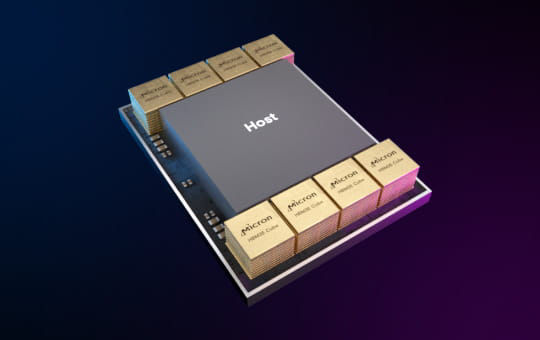A Long-Term Innovation Path
Micron began in 1978 as a four-person semiconductor design company in the basement of a Boise, Idaho, dental office. By 1980 we had broken ground on our first fabrication plant, and then just a few years later we introduced the world’s smallest 256K DRAM. In 1994, we earned a spot on the Fortune 500 and steadily grew into an industry leader through our technology innovations, key partnerships, and strategic acquisitions around the world. Check out the milestones that have made us who we are today.
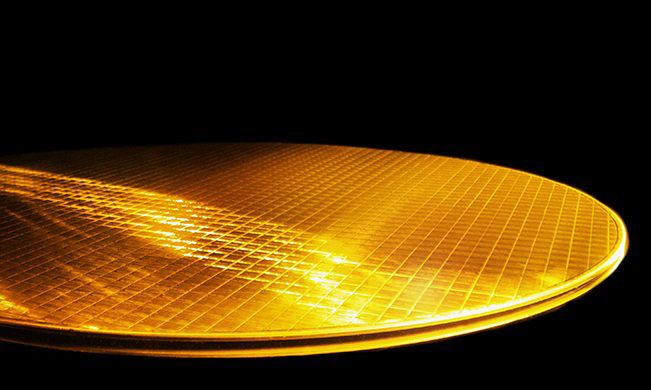
Micron Ships World’s First 232-Layer NAND, Extends Technology Leadership
Micron's industry-leading 232-layer 3D NAND provides the foundation for a new wave of end-to-end technologic innovation. With this industry first 232-layer advancement, Micron enables the best industry storage density, improved performance and industry-leading I/O speed. This helps unlock new opportunities for digitization, optimization and automation in client, mobile and data center markets.
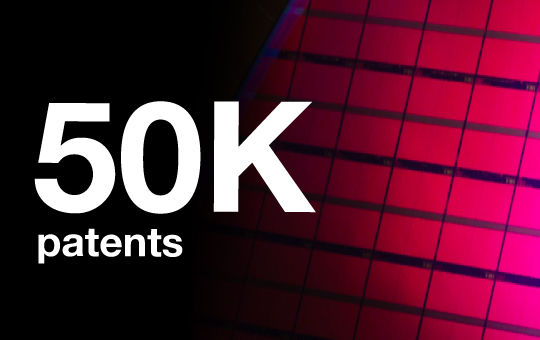
Micron Marks 50,000 Patents Milestone
Micron Technology's leadership is founded on continual innovation in memory, storage, semiconductor technologies and beyond. The milestone of achieving our 50,000th patent is a reflection of the creativity of Micron's global team members over the decades and their dedication to drive innovation forward.
- Micron ships world’s most advanced DRAM technology with 1-Beta Node
- Micron invests up to $100 billion to build megafab in Clay, New York
- Micron invests $15 billion in new Idaho fab
- Micron ships world’s first 232-layer NAND
- Micron Ventures Fund II commits $200M for deep tech startups
- Micron marks 50,000 patents milestone

Shipped industry’s first 1α DRAM process technology
1α (1-alpha) node DRAM products are built using the world’s most advanced DRAM process technology and offer major improvements in bit density, power and performance. The applications for this new DRAM technology are extensive and far reaching — enhancing performance in everything from mobile devices to smart vehicles.
2021 Highlights
- Micron opens design center in Atlanta
- Micron issues $1 billion inaugural green bond
- Micron invests $150+ billion in leading-edge memory and R&D
- Micron achieves comprehensive global pay equity For All
- Micron delivers industry’s first 1α DRAM technology
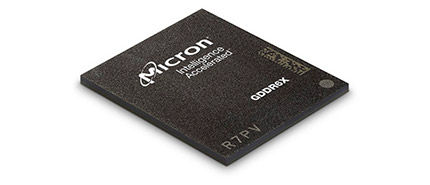
Launched GDDR6X, first memory to use PAM4 multi-level signaling
GDDR6X is the world’s fastest discrete graphics memory solution, which is the first to power system bandwidth up to 1 terabyte per second (TB/s). The multilevel signaling innovation in GDDR6X has shattered conventional bandwidth limits, clocking record-breaking speeds while accelerating performance on complex graphics workloads across next-generation gaming applications.
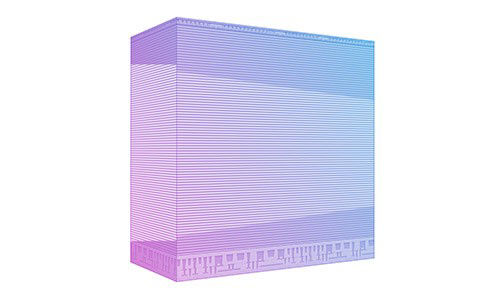
Shipped industry’s first 176-layer NAND flash
The world’s first 176-layer 3D NAND flash memory achieves unprecedented, industry-pioneering density and performance. Together, Micron’s new 176-layer technology and advanced architecture represent a radical breakthrough, enabling immense gains in application performance across a range of storage use cases spanning data center, intelligent edge and mobile devices.
2020 Highlights
- Micron allocates $50 million to community development for underrepresented groups
- Micron dedicates $35 million to global communities affected by the COVID-19 pandemic
- Micron ships world’s first 176-Layer NAND flash
2019 Highlights
- Forbes places Micron on its list of Best Employers for Diversity
- Micron acquires FWDNXT
- Micron announces advanced technology DRAM center in Hiroshima, Japan
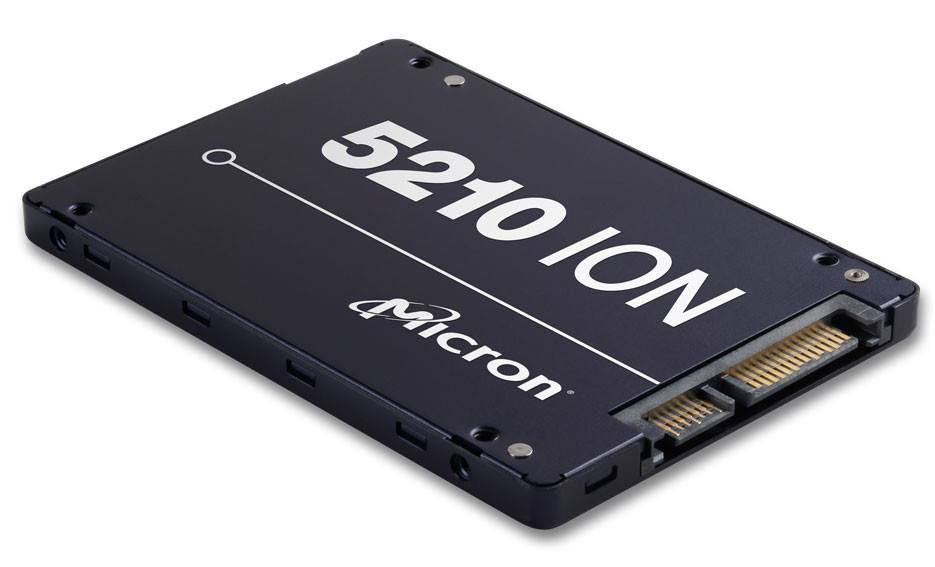
Micron Ships Industry's First Quad-Level Cell NAND SSD
Micron began shipments of the industry’s first SSD built on revolutionary quad-level cell (QLC) NAND technology. The Micron® 5210 ION SSD provides 33 percent more bit density than triple-level cell (TLC) NAND, addressing segments previously services with hard disk drives (HDDs).
2018 Highlights
- Micron receives its first Great Place to Work® certification
- Micron celebrates 40th anniversary: 40 Years Strong, Getting Stronger
- Micron announces $1M grant to advance curiosity in Artificial Intelligence
- Micron establishes its Center of Excellence for Long-Lifecycle Products in Manassas, Virginia

Micron Announces Authenta™ Security Technology for IoT Devices
Micron® Authenta™ Technology helps enable strong cryptographic IoT device identity and health management in flash memory, providing a unique level of protection for the lowest layers of IoT device software, starting with the boot process.
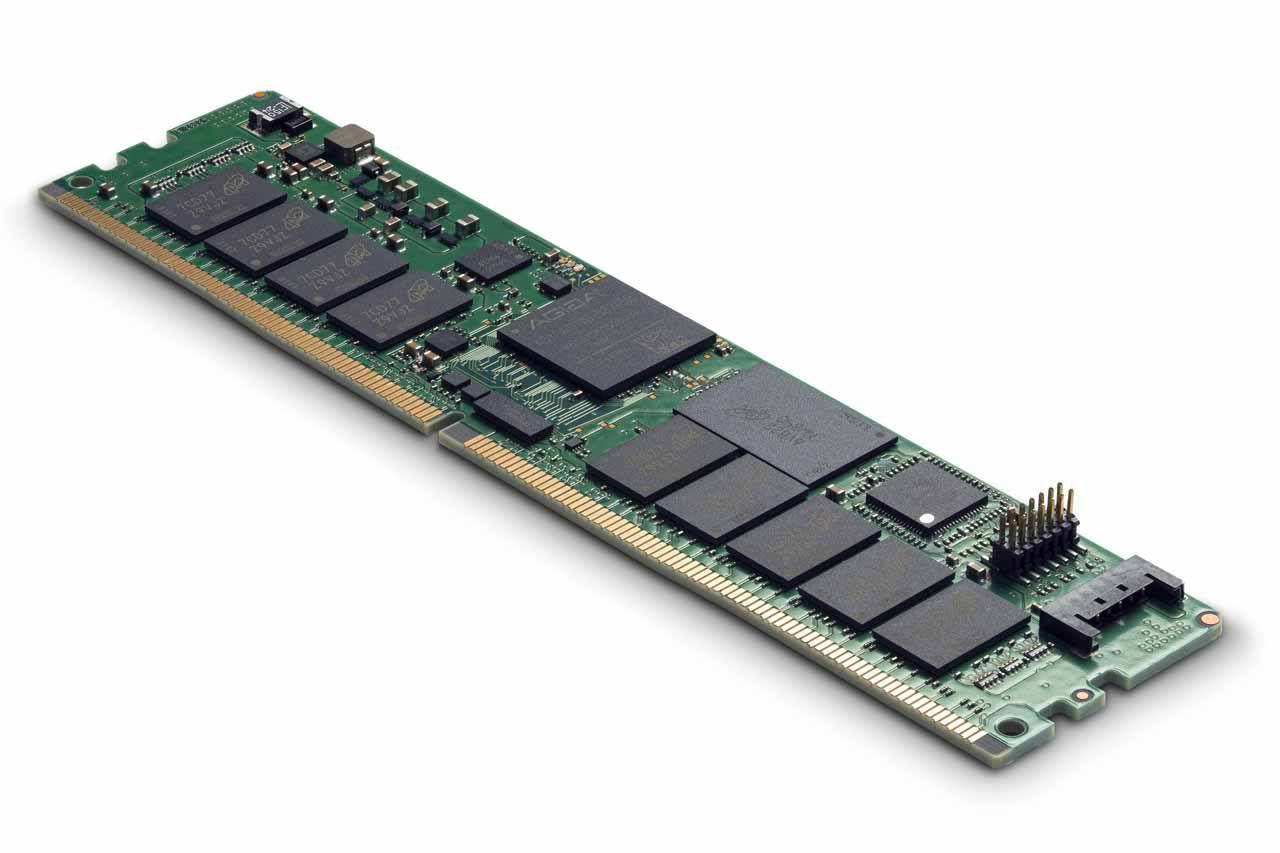
Micron Doubles Capacity of NVDIMM to 32GB
Micron increased the density of its DDR4 NVDIMMs to 32GB, doubling the capacity of previous solutions. NVDIMMs, also known as persistent memory, can permanently store data in DRAM even after a power loss. The Micron 32GB NVDIMM-N module provides both high-capacity and very fast throughput.
2017 Highlights
- Micron establishes its Center of Excellence for High-Volume DRAM in Taiwan.
- Micron establishes Technology Innovation Center of Excellence in Boise
- Micron named a Top 100 Innovator in Diversity & Inclusion by Mogul
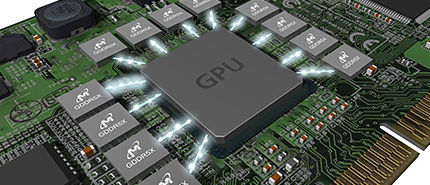
Micron Introduces GDDR5X, the World’s Fastest Graphics DRAM
This memory’s record-high, per-pin data rate enables massive graphics performance and GPGPU computation capability. GDDR5X offers up to 14Gb/s data rates, essentially doubling the bandwidth of prior GDDR5 memory.
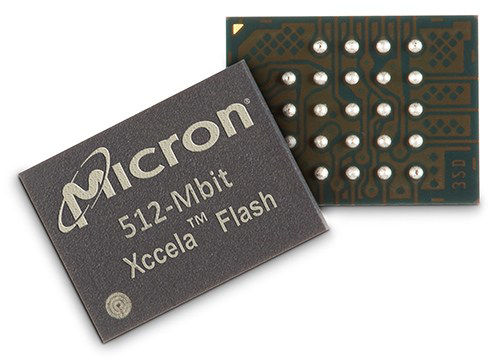
Micron Forms Xccela™ Consortium to Promote New Type of Interface Bus
The creation of the Xcella™ industry consortium helped to accelerate adoption of the Xccela Bus Interface, a new type of high-performance digital interconnect suitable for both volatile and non-volatile memories.
2016 Highlights
- Micron acquires Inotera Memories
- Micron named one of the most popular Fortune 500 companies to work for based on employee input
- Micron establishes its Center of Excellence for NAND in Singapore
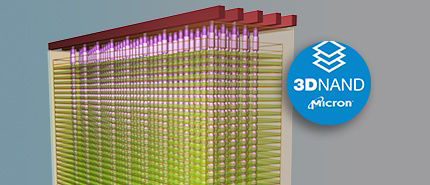
Micron and Intel Unveil 3D NAND, the Highest-Density Flash Ever Developed
3D NAND marks a significant inflection point in the future of semiconductors. By stacking layers of data storage cells vertically, 3D NAND delivers three times higher capacity than planar NAND technology.

Micron and Intel Announce 3D XPoint™ Technology
3D XPoint represents the first new memory category in decades. This non-volatile memory is up to 1,000 times faster and has up to 1,000 times greater endurance than NAND.
2015 Highlights
- Micron ranked #1 in Top 50 Employers by Electronic Design magazine
- Micron acquires Tidal Systems
- Micron acquires Convey Computer
- Micron acquires Pico Computing
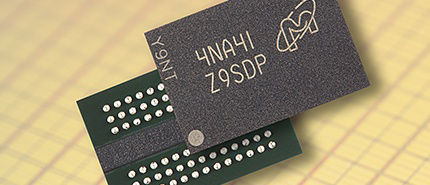
Micron Leads Industry With First Monolithic 8Gb DDR3 SDRAM
This single component provided a significant density increase to 1 gigabyte on a single chip. This higher density enables cost-effective, high-capacity solutions optimized to support large-scale, data-intensive workloads.
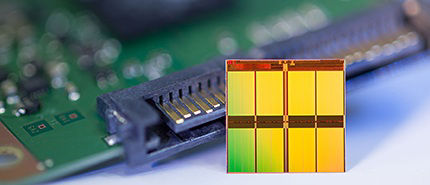
Micron Delivers World’s Smallest 16nm NAND Flash Device
Micron’s 16nm process technology delivered 16GB of storage on a single die, the highest-density planar NAND flash memory ever developed. Using this process, a single 300mm wafer can create nearly 6TB of storage.
2013 Highlights
- Micron acquires Elpida Memory Inc. and Rexchip Electronics Corporation
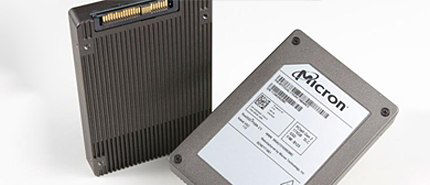
Micron Produces Industry’s First 2.5-Inch PCIe Enterprise SSD
This solution combined a high-performance PCI Express interface with a hot-swappable 2.5-inch form factor and custom Micron controller, creating new options for enterprise performance scalability and serviceability.
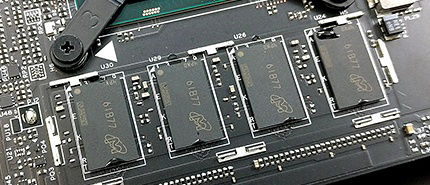
Micron Creates New Low-Power DRAM Category for Ultrabook™ Devices
DDR3L-RS memory established a new category of “reduced-power” DRAM solutions, enabling longer battery life for a new generation of high-performance, ultrathin devices like laptops, tablets, and Ultrabook systems.
*Ultrabook is a trademark of Intel Corporation or its subsidiaries in the U.S. and/or other countries.
- Micron celebrates 45th anniversary
- Micron samples industry’s first 8-high 24GB HBM3E memory
- Micron announces new semiconductor assembly and test facility in India
- Micron launches memory expansion module portfolio to accelerate CXL 2.0 adoption
- Micron starts construction on leading-edge memory manufacturing fab in Boise
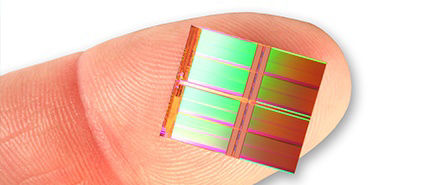
Micron and Intel Announce World’s First 20nm MLC NAND
This 128Gb MLC memory could store 1Tb of data in a single fingertip-size package with just eight die, setting a new storage benchmark. Additionally, this memory was the first to use an innovative planar cell structure that overcame the scaling constraints of standard floating-gate NAND.
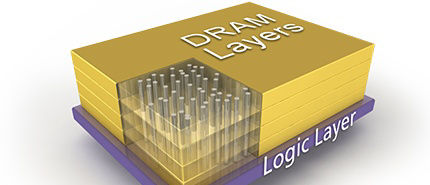
Micron Debuts Hybrid Memory Cube (HMC) Architecture
Hybrid Memory Cube (HMC) is a revolutionary DRAM architecture that combines high-speed logic with a stack of memory die using through-silicon via (TSV) technology. Learnings from HMC continue to be applied towards future, emerging memory technologies.
2010 Highlights
- Micron acquires NOR manufacturer Numonyx B.V. from Intel, STMicroelectronics, N.V. and Francisco Partners
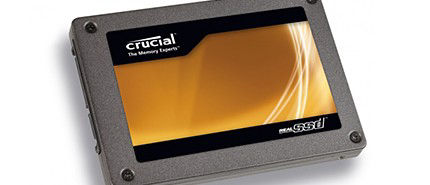
Micron Ships RealSSD™ C300, Industry’s Fastest Client SSD
At the time of launch, the C300 was the industry’s fastest SSD for notebook and desktop PCs. With support for the SATA III interface, this SSD delivered 6 Gb/s which significantly boosted throughput speeds for data transfers, application loads and boot times.
2008 Highlights
- Micron and Nanya form DRAM joint venture Inotera Memories
- Micron celebrates 45th anniversary
- Micron samples industry’s first 8-high 24GB HBM3E memory
- Micron announces new semiconductor assembly and test facility in India
- Micron launches memory expansion module portfolio to accelerate CXL 2.0 adoption
- Micron starts construction on leading-edge memory manufacturing fab in Boise
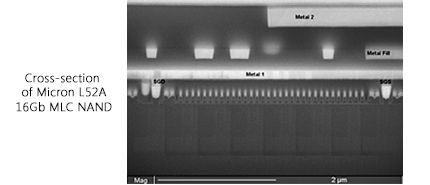
Micron Develops Industry’s First Pitch-Doubled NAND
Pitch-doubling was introduced as a lithography technique for increasing bit density without a lithography change. This method involved the separation of bit lines into first and second metal layers, allowing Micron to deliver a 16Gb MLC device on existing 50nm technology.
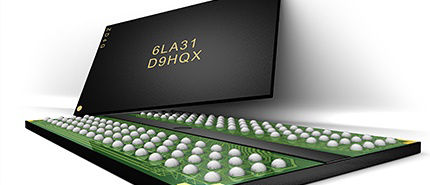
Micron Advances Low-Latency, Low-Power RLDRAM 2 Memory
Originally designed for networking, this high-performance DRAM quickly became the solution of choice for an unexpected application: DLP-based TVs and projectors. While density has increased over time, reduced latency DRAM remains a staple in networking applications today.
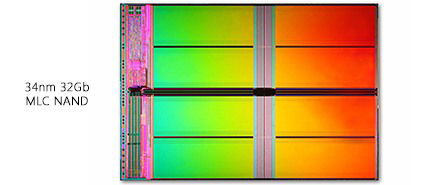
Micron and Intel First to Deliver Sub-40nm NAND Flash Memory
This multi-level cell (MLC) NAND flash device was the industry’s first monolithic 32Gb NAND, which enabled high-density solid state storage in very small form factor devices, including digital cameras, personal music players and digital camcorders.
- Micron celebrates 45th anniversary
- Micron samples industry’s first 8-high 24GB HBM3E memory
- Micron announces new semiconductor assembly and test facility in India
- Micron launches memory expansion module portfolio to accelerate CXL 2.0 adoption
- Micron starts construction on leading-edge memory manufacturing fab in Boise

Micron Develops Mongoose Tester for Improved Accuracy, Lower Costs
This internally-developed tester is used exclusively by Micron to increase DRAM test throughput and accuracy. Micron continues to evolve this tester platform to meet new and future memory standards.
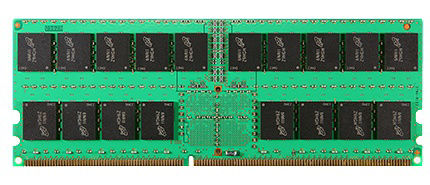
Micron Unveils the World's Highest-Density Server Memory Module
Micron’s 16GB DDR2 module served the fast-growing server memory footprint of the 2000s as the rise of virtualization technology packed multiple applications onto single servers. These high-density server modules are a trend that continues today.
2006 Highlights
- Micron acquires Lexar Media
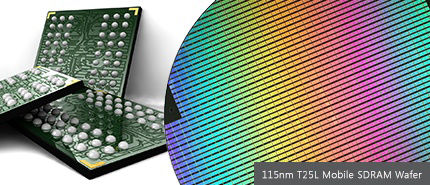
Micron Introduces High-Capacity, Low-Power Mobile LPDRAM
Micron’s 16MB DRAM — built on a tiny 33mm2 die — enabled higher capacity and lower power in a small footprint. As cell phones transitioned from simple voice to multimedia, LPDRAM requirements increased dramatically, a trend that continues in smartphones today.
2005 Highlights
- Micron and Intel form a NAND joint venture IM Flash Technologies
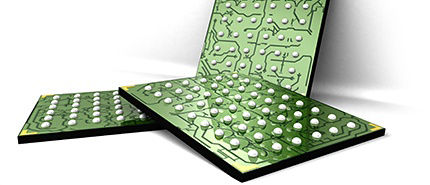
Micron Unveils Pseudo-Static RAM for Cell Phones
Pseudo-Static SRAM (PSRAM) delivered the high bandwidth, capacity and low power necessary to replace SRAM in mobile devices. Micron’s leadership in PSRAM paved the way for future low-power DRAM products that are used in mobile devices today.
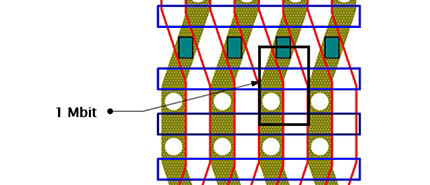
Micron Develops the Industry’s First 6F2 DRAM Cell
Micron developed an entirely new 6F2 cell architecture to replace the industry’s 8F2 cell standard, enabling approximately 25% more bits per wafer. This higher-density design enabled Micron to reclaim the title as the industry’s most cost-competitive memory producer.
2004 Highlights
- Micron ships first 2-gigabit NAND flash product
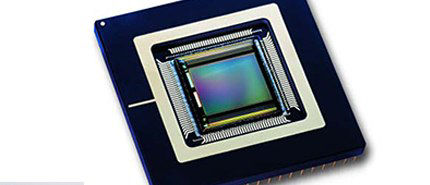
Micron Develops 1.3-Megapixel CMOS Image Sensor
Micron’s entry into image sensors established the company as an innovator capable of making CMOS technology with image quality rivaling charge coupled device (CCD) sensors. Today, CMOS sensors are the standard in digital cameras of all types, from smartphones to high-end professional gear.
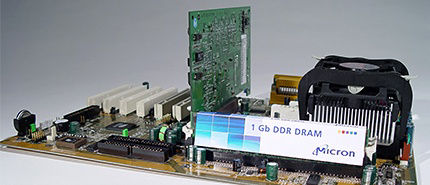
Micron Demonstrates Industry's First 1Gigabit DDR on 110nm Process
Micron’s 1Gb DDR was built on the most advanced process technology in the world (110nm), outpacing semiconductor giants Intel and AMD who were still on 130nm. This chip established Micron as the memory industry leader in both density and interface performance.
2002 Highlights
- Micron demonstrates world’s first 1-gigabit DDR DRAM product
- Micron acquires Toshiba's commodity DRAM operations at Dominion Semiconductor, LLC, a subsidiary of Toshiba Corporation of Japan, located in Manassas, Virginia
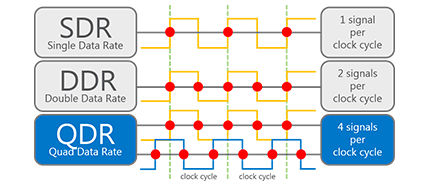
Micron's Quad Data Rate SRAM Doubles Memory Bandwidth
Micron’s innovative quad data rate (QDR) architecture effectively doubled the SRAM bandwidth for communication applications such as switches and routers. This unique design used two ports to independently run at a double data rate, resulting in four data items per clock cycle.
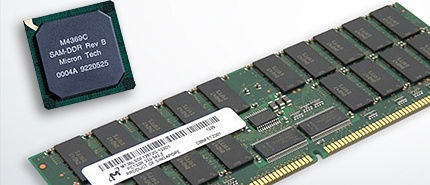
Micron Produces Industry’s First DDR DRAM
Micron’s demonstration of the Samurai double data rate (DDR) chipset proved that DDR memory could deliver performance equivalent to the competing Direct RDRAM solution, but at a much lower cost. Ultimately, DDR would become the undisputed industry-standard interface for high-performance DRAM.
1999 Highlights
- The Micron Foundation is established to advance STEM education and support communities.
1998 Highlights
- Micron becomes one of the largest memory producers in the world with the purchase of Texas Instruments' worldwide memory operations
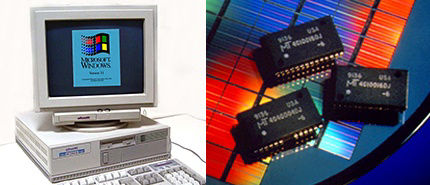
Micron 16-Megabit DRAM Enables PCs With New Windows 3.1
A milestone in density, the 16-megabit DRAM replaced Micron's mainstay 4-megabit DRAM lineup. These higher capacity chips coincided with Microsoft’s release of Windows 3.1, which drove minimum PC RAM requirements to 1 megabyte.
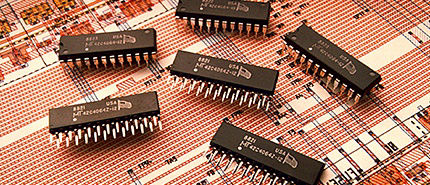
Micron Introduces First Video RAM and Fast Static RAM Products
The introductions of 256K video RAM and fast static RAM broadened Micron’s product portfolio beyond traditional DRAM, enabling Micron to become a player in differentiated memory types.
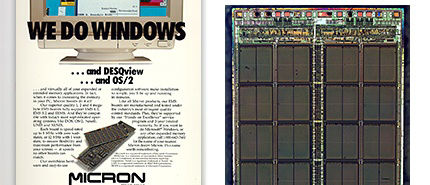
Micron Brings 1-Megabit DRAM to Market
A milestone in density, the 1Mb DRAM became a staple for main memory in PCs and graphics cards during the late 1980s and 1990s. Micron’s 1Mb DRAM enabled high-capacity SIMM modules that supported PCs equipped with Microsoft’s new Windows OS.
1987 Highlights
- Micron introduces 1-megabit DRAM product
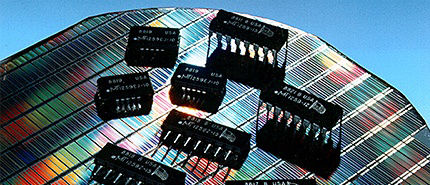
Micron Unveils World’s Smallest 256K DRAM Chip
In addition to being introduced as the world’s smallest 256K DRAM die, this chip also represented an industry milestone in DRAM density. By using bigger and easier-to-read memory cells, the 256K DRAM was a springboard to future efficiency and profitability for the young memory startup.
1984 Highlights
- Micron introduces world’s smallest 256K DRAM product
- Micron becomes a publicly traded company on NASDAQ
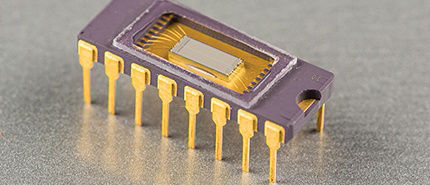
Micron Ships its First 64K DRAM Product
Micron’s 64K DRAM was the first product manufactured at the company’s newly completed fabrication facility in Boise, Idaho. Micron sold its 64K DRAM into many of the first mass-produced personal computers, including the Commodore 64 home computer.
1981 Highlights
- First 64K DRAM product is shipped
1980 Highlights
- Micron breaks ground on first fabrication site in Boise, Idaho

Micron Engineers Finalize 64K DRAM Design
While not the first company to make 64K DRAM, Micron’s engineers created a newer, smaller version that was lauded as the smallest 64K DRAM design in the world. This innovative design led to high-volume manufacturing of the company’s first 64K product in 1981.

Micron Technology Is Founded
Micron started as a four-person semiconductor design company in the basement of a Boise, Idaho dental office. Micron’s first contract was for the design of a 64K memory chip for Mostek Corporation.
1978 Highlights
- Micron Technology Inc., is founded on Oct. 5, 1978
